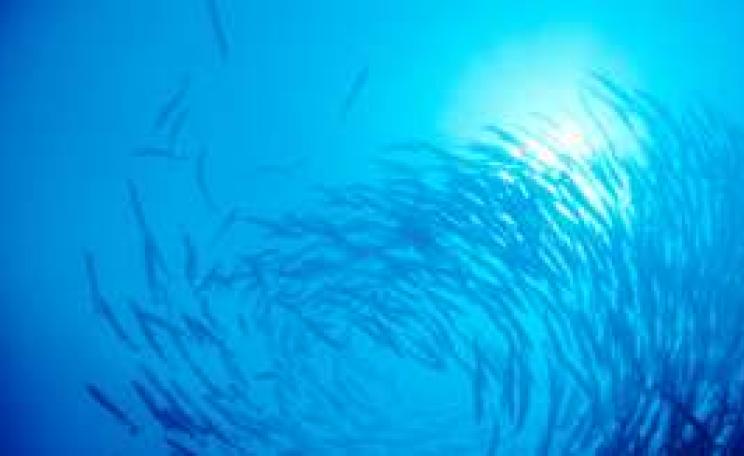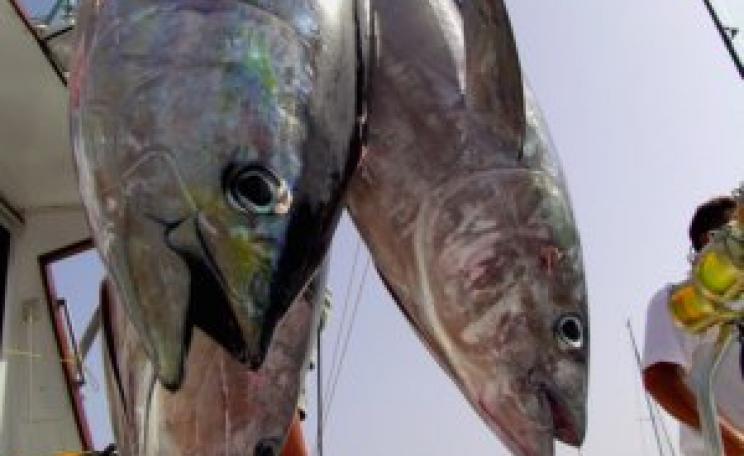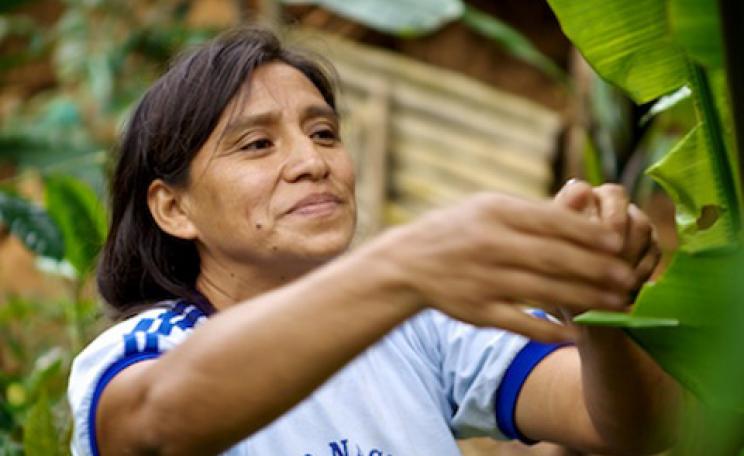Imagine a ship so big it runs the length of an entire football pitch, with fishing nets large enough to engulf two Millennium Domes and its own on-board factory freezing plant. If you ever see one of these floating sea monsters, you will begin to understand why 30 per cent of world fisheries have collapsed, while 70 per cent are fully exploited or worse. It is predicted that all world fisheries will collapse by 2048.
That’s right. Collapse. Over roughly the past 50 years, the rise of industrial fishing fleets and the technology created to help them operate have ensured that there is nowhere left for fish to hide. While accounting for only 1 per cent of fishing vessels worldwide, industrial fleets take more than half the global catch of 80 to 90 million tonnes per year, according to Greenpeace. A ‘super seiner’ fishing vessel, for example, can catch in just two days what it takes a fleet of small boats and canoes from a traditional fishing community an entire year to catch.
Industrial fishing is also intricately linked to wildlife destruction, as methods such as bottom-trawling scrape the sea floor of vital marine life; large-scale driftnets, while illegal, still threaten many marine mammals. (Fishy Business, an excellent short documentary on driftnetting and what it is doing to swordfish and dolphins in the Mediterranean, can be seen at http://www.whaletrackers.com/). Many industrial fishing methods are indiscriminate, resulting in some 27 million tonnes of dead and dying creatures, snared as unwanted bycatch, being thrown back into the oceans every year. Industrial shrimp-trawling is one of the worst cases: some 20lb of unwanted bycatch may be landed for every 1lb of shrimp.
Governments ensure this system of ocean rape continues through subsidies for the least efficient and most damaging fishing vessels. According to Oceana, the global fishing fleet is an estimated 250 per cent larger than needed to fish at sustainable levels. Fuel can account for 50 per cent of running costs, and without subsidies ships wouldn’t have the wherewithal to bottom-trawl in deep seas. The EU Common Fisheries Policy, for example, primarily subsidises fuel, according to Melissa Pritchard, a fisheries policy officer at the Marine Conservation Society (MCS). This policy, she says, ‘doesn’t incentivise the industry to change to more selective fishing gear that also uses less fuel’.
Presumably, then, farming fish is part of the answer to help take pressure off exploited stocks of wild fish? Farmed seafood now provides 42 per cent of the world’s seafood supply, and is on target to exceed half in the next decade, according to Brian Halweil of Worldwatch. In Asia, fish-farming has been practised for thousands of years in a closed loop system, where vegetable scraps and crop residues are used as feed, and fish waste is used to fertilise rice farms.
Sadly, the fish-farming of today has more in common with the factory farms for meat, eggs and dairy: generating large amounts of waste and entirely removed from ecological systems (see ‘Fishy business’, page 24). Scotland’s salmon aquaculture industry, which has grown exponentially in recent years, is estimated to produce the same amount of nitrogen waste as the untreated sewage of 3.2 million people, just about half the country’s total population, according to Brian Halweil.
Perhaps one of the most unsavoury examples of fish-farming involves bluefin tuna, now overfished to the brink of commercial collapse. In the trials taken place so far, these huge and powerful fish have not responded well to being in captivity, and have had to be drugged with hormone implants, which are shot into them by divers with spears, in order to reproduce successfully outside their natural habitat.
A net drain
Modern fish-farming is actually a net drain on the world’s seafood supply. Predatory species such as salmon, striped bass, tuna and shrimp feed on smaller species of fish, such as anchovy, herring, capelin and whiting, taking away an important source of human sustenance. As a report from the University of British Columbia’s ‘Sea Around Us’ project notes, in 1948, only 7.7 per cent of marine fish landings were turned into fishmeal and fish oil. Now that figure is 37 per cent. It takes a huge amount of fish feed to harvest fish – approximately 4kg to produce 1kg of salmon, and 20kg of feed to produce 1kg of tuna.
Being merely wild or farmed is not a simple way to decide what fish to buy. The issue is tricky – here are four points to bear in mind:
- One of the most popular and regularly eaten fish in the UK is canned tuna. Most tuna is caught using methods that cause significant bycatch, or target juveniles, and all stocks of all species of tuna are fished at full capacity. If buying tuna, look for the MCS logo, make sure it is skipjack or buy from a responsible canned fish company such as Fish4Ever.
- With farmed marine species, go for smaller fish lower down the food chain, or shellfish (mussels, scallops and oysters, which feed on things that naturally occur in water and improve water quality – not tiger prawns), and herbivores such as Tilapia (farmed in the UK in lakes) and carp. Organic is better than non-organic, as stock densities are limited, feed sourced sustainably and use of chemicals and sea lice treatments restricted.
- Not all wild fish are off limits, but be choosy about origin and how it was caught. Go to http://www.fishonline.org/ for lists of which to avoid and which to eat. With salmon, for example, five species of Pacific salmon caught in Alaskan waters are MSC-certified – a much better choice than Atlantic salmon, stocks of which are severely depleted. Take pressure off the overfished species such as tuna, shrimp, salmon, haddock and cod by choosing lesser-known alternatives such as dab.
- Use your voice to change the policy on fishing and marine issues – see box below.
------
For sustainable fish recipes from the head chef of pioneering eco-restaurant The Water House, Marie Gonfond, see www.theecologist.org/food

This article first appeared in the Ecologist January 2009
For ethical and sustainable suppliers of Food and Drink goods and services check out the Ecologist Green Directory here







